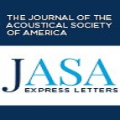Differences in interaural phase configuration between a target and a masker can lead to substantial binaural unmasking. This effect is decreased for masking noises with an interaural time difference (ITD). Adding a second noise with an opposing ITD in most cases further reduces binaural unmasking. Thus far, modeling of these detection thresholds required both a mechanism for internal ITD compensation and an increased binaural bandwidth. An alternative explanation for the reduction is that unmasking is impaired by the lower interaural coherence in off-frequency regions caused by the second masker (Marquardt & McAlpine, 2009, JASA pp. EL177 - EL182). Based on this hypothesis, the current work proposes a quantitative multi-channel model using monaurally derived peripheral filter bandwidths and an across-channel incoherence interference mechanism. This mechanism differs from wider filters since it has no effect when the masker coherence is constant across frequency bands. Combined with a monaural energy discrimination pathway, the model predicts the differences between a single delayed noise and two opposingly delayed noises, as well as four other data sets. It helps resolve the inconsistency explaining some data sets requires wide filters while others require narrow filters.
翻译:目标与遮罩器之间在间相位结构上的差异可能会导致巨大的硬膜松动。 这种效果在掩射噪音时会降低。 在多数情况下,与对面的ITD(ITD)相加的第二个噪音会进一步降低二进制的不相容。 到目前为止,这些检测阈值的建模既需要内部 ITD 补偿机制,也需要增加二进制带宽。 减少的另一种解释是,由于第二个遮罩器(Marquardt & McAlpine,2009年;JASA pp. EL177 - EL182)造成的低频区间的一致性,因此会降低这种效果。基于这一假设,目前的工作提议使用一个定量多道模型,使用月度衍生的外围过滤带宽和跨通道不协调干扰机制。这个机制与更广泛的过滤器不同,因为当掩码在频率波段之间保持恒定时,它不会产生任何效果。 与一个月度能源歧视路径相结合,模型预测一个单一延迟的噪音和两个对立的隔热器之间的差异。 根据这个假设,目前的工作提出一个定量的多道模型需要其他的不一致性。




